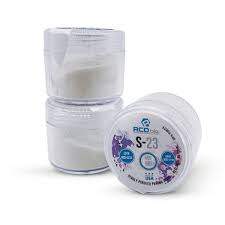
- +86-13363869198
- weimiaohb@126.com

დეკ . 21, 2024 13:25 Back to list
Exploring Eperisone Hydrochloride CAS 56839-43-1 Applications and Benefits in Muscle Relaxation Therapy
Eperisone Hydrochloride An Overview
Eperisone hydrochloride, with the Chemical Abstracts Service (CAS) number 56839-43-1, is a medication primarily used in the treatment of musculoskeletal conditions. As a muscle relaxant, eperisone plays a vital role in managing pain and discomfort associated with muscle tension and spasms.
Mechanism of Action
Eperisone hydrochloride operates through a multifaceted mechanism. It is believed to exert its muscle relaxant effects by influencing both central and peripheral nervous systems. The drug acts by inhibiting the activity of the spinal cord, which results in reduced transmission of nerve signals that contribute to muscle contraction. Moreover, eperisone is thought to enhance the blood flow to muscles, thereby providing additional relief from pain and discomfort caused by muscle tightness.
This dual action makes eperisone a unique compound for treating conditions like cervical spondylosis, lumbago, and other forms of musculoskeletal pain. Unlike traditional muscle relaxants that may induce sedation, eperisone tends to have a milder sedative profile, making it more suitable for individuals who need to maintain their day-to-day activities without drowsiness.
Clinical Applications
In clinical practice, eperisone hydrochloride is commonly prescribed for patients suffering from various musculoskeletal disorders. Conditions such as lower back pain, neck pain, and even post-operative rehabilitation often require interventions that alleviate muscle stiffness and promote relaxation. Eperisone effectively addresses these issues and is often used in conjunction with physical therapy and other non-pharmacological treatments.
Research shows that eperisone can significantly improve patients' quality of life by reducing pain intensity and enhancing mobility. A few studies have highlighted its efficacy when compared to other muscle relaxants, suggesting that it may offer similar benefits with a better tolerability profile.
Side Effects and Safety Profile
eperisone hydrochloride cas 56839-43-1

As with any medication, eperisone hydrochloride is not without potential side effects. Commonly reported adverse effects include dizziness, drowsiness, and gastrointestinal disturbances, such as nausea and diarrhea. Although most patients tolerate the drug well, it's essential to monitor for these symptoms, especially during the initial phases of treatment.
Patients with a history of hypersensitivity to eperisone or its components should avoid its use. Additionally, pregnant or breastfeeding women should consult their healthcare providers to weigh the benefits and risks of using eperisone. The safety profile of eperisone is generally favorable; however, like any medication, its use should be guided by a qualified healthcare professional.
Dosage and Administration
Eperisone hydrochloride is typically administered in oral form, with the dosage tailored to individual patient needs. The standard starting dose is often around 50 mg taken three times daily, but adjustments may be made based on the patient's response and tolerance. It is crucial for patients to adhere to the prescribed regimen and not exceed the recommended dosage to minimize the risk of adverse effects.
Healthcare professionals usually advise taking eperisone after meals to reduce the likelihood of gastrointestinal irritation. As with any medication, the treatment course should be reassessed periodically to ensure its continued efficacy and safety.
Conclusion
Eperisone hydrochloride stands as a valuable option in the pharmacological management of muscle-related pain and discomfort. Its unique mechanism of action, combined with a favorable safety profile, makes it a preferred choice for many clinicians treating musculoskeletal disorders. As research in this field develops further, continued investigation into eperisone's efficacy across different populations and conditions will likely enhance our understanding of its therapeutic potential.
In conclusion, eperisone hydrochloride represents a significant tool in the arsenal against musculoskeletal pain, supporting both patients and healthcare providers in the quest for effective pain management solutions. As with any therapeutic agent, careful consideration of individual patient needs and monitoring for potential side effects is essential for optimal outcomes.
-
Premium CAS 1451-83-8 Factory with GPT-4 Turbo | AI-Optimized
NewsJul.31,2025
-
Pharmaceutical Intermediates - AI-Optimized Synthesis & Purity
NewsJul.31,2025
-
Top CAS: 79099-07-3 Factories & Wholesale Supplier from China
NewsJul.30,2025
-
High-Quality GS-441524 for White Liquid Type Factories & Suppliers
NewsJul.29,2025
-
High-Quality Pharmaceutical Intermediates for Sale – Reliable Supply
NewsJul.29,2025
-
High-Quality Pharmaceutical Intermediates for Sale - Reliable Solutions
NewsJul.29,2025